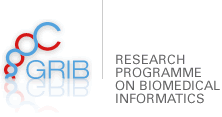
Thursday, 24th March, 2011, 11:00-12:00
Computational methods to solve the crystallographic phase problem
Given the phase problem, determining an initial model from the diffraction data (phasing) is a bottleneck in crystallography. Ab Initio phasing of macromolecular structures with no heavy atoms has been limited to cases with up to around 1000 atoms in the asymmetric unit, diffracting to atomic resolution. Both the size and resolution barriers have been overcome in the case of several previously unknown structures. Proteins with a few thousand atoms, diffracting to 2Å have been solved through a combination of location of model fragments such as poly-alanine alpha-helices with the program PHASER and density modification with the program SHELXE. Given the difficulties in discriminating correctly positioned fragments, the method has to test many putative groups of fragments in parallel, thus calculations are performed in a grid. The method has been called after the Italian painter Arcimboldo, who used to compose portraits out of fruits and vegetables. In the case of our program, most collections of fragments remain a “still-life”, but some are correct enough for density modification to reveal the protein’s portrait. The same methodology can be used to build a protein out of shredded fragments from a low homology or NMR model where conventional molecular replacement has failed.
Short CV,
Chemistry degree in 1987, University of Zaragoza, Dr. Rer. Nat. University of Zaragoza in 1992, Product Research Scientist at the European Research Center in Brussels with Procter & Gamble for 15 months. Moved for a HCM postdoc at the University of Göttingen (Germany) and stayed for an Habilitation (German Higher Doctorate) at (1996-2001) with Prof. Sheldrick, and as C2 leading an independent research group. Moved to Barcelona in September 2003 joining the IBMB-CSIC as ICREA Research Professor.
Chemistry degree in 1987, University of Zaragoza, Dr. Rer. Nat. University of Zaragoza in 1992, Product Research Scientist at the European Research Center in Brussels with Procter & Gamble for 15 months. Moved for a HCM postdoc at the University of Göttingen (Germany) and stayed for an Habilitation (German Higher Doctorate) at (1996-2001) with Prof. Sheldrick, and as C2 leading an independent research group. Moved to Barcelona in September 2003 joining the IBMB-CSIC as ICREA Research Professor.
Speaker: Isabel Usón - Molecular Biology Institute of Barcelona (IBMB)
Room Seminar Xipre (PRBB) - 1st Floor, room 173.06


